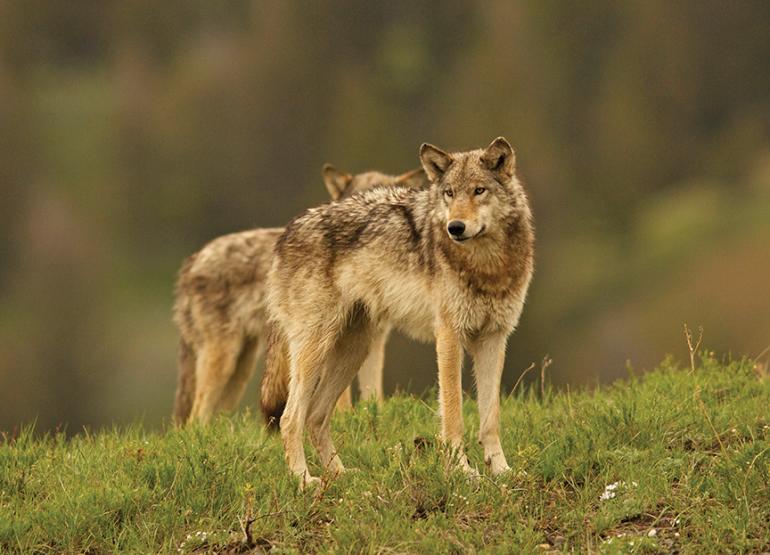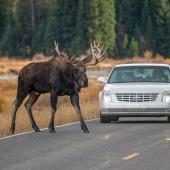Wolf Watch
The latest on Montana's top dog
"The wolf reintroduction has gone so well that, somewhat ironically, the wolves are now threatened by their own success." —William R. Lowry, Repairing Paradise: The Restoration of Nature in America’s National Parks
After nearly 20 years, Montana’s wolf-repopulation effort has been an undeniable success. A 2013 count estimated 627 wolves across the state—a huge increase from the 66 wolves reintroduced in 1995-96.
Wolf specialists are few, and the packs are spread far and wide, making it tough to get an accurate count. But regardless of numbers, Montana’s gray wolves were removed from the Endangered Species List in 2011, followed by a revised statewide management plan.
A common misconception is that today’s wolves have thrived unnaturally well because they are a different subspecies than the native population. Douglas Smith, Yellowstone National Park’s senior wildlife biologist, does not believe this to be true:
“The original subspecies was done away with in 1995 when a new naming system came into play. Change in the type of wolf is gradual, because different subspecies require genetic isolation. Wolves are too good at moving around to become isolated from each other—they are always sharing genes.”
The state’s ecosystems are drawing closer to maintaining a consistent predator/prey ratio, and while wolves have adversely affected big-game populations, it’s difficult to track as each region is unique and hunting regulations vary year to year. For instance, during a period of elk overpopulation, Montana managed a late hunt that targeted only cow elk, a population-reduction policy which ended in 2009 as numbers dropped. The elk population did decline at that time, but clearly wolf predation wasn’t the only factor.
Wolf-related livestock loss happens every year—Montana Wildlife Services confirmed 78 livestock killed by wolves in 2013. To mitigate the damage, the Montana Livestock Loss Board compensates ranchers, and permit-holding stockgrowers are allowed to shoot wolves seen chasing livestock. In 2013, 75 wolves were killed in an attempt to reduce further loss of livestock.
Currently, the Montana FWP wolf-management program plans to maintain their goal of keeping gray wolves off the Endangered Species List, while working to manage population to further reduce impacts on game and livestock.
After the Hunt
Legal wolf hunts were implemented as a management tool after the gray wolf was delisted in Montana. Permits are strictly regulated, available only if 15 breeding pairs existed the year before. With only two hunting seasons completed, the effect of the wolf hunt is not entirely clear. Douglas Smith, senior wildlife biologist for Yellowstone National Park, says that “the current wolf population is healthy, not in danger of extinction, and able to withstand hunting pressure.”
Montana’s wolf hunt doesn’t just reduce wolf numbers, it allows hunters to become involved in the state’s approach to wolf management. This helps with social acceptance of wolves, which is further perpetuated by allowing individuals to kill wolves who have gone after livestock. The hunt can also reduce wolf numbers in areas heavy in agriculture or housing declining game. Wolf-season dates and permits are determined each July, based on numbers from the previous year. Check out fwp.mt.gov for the most up-to-date information.












